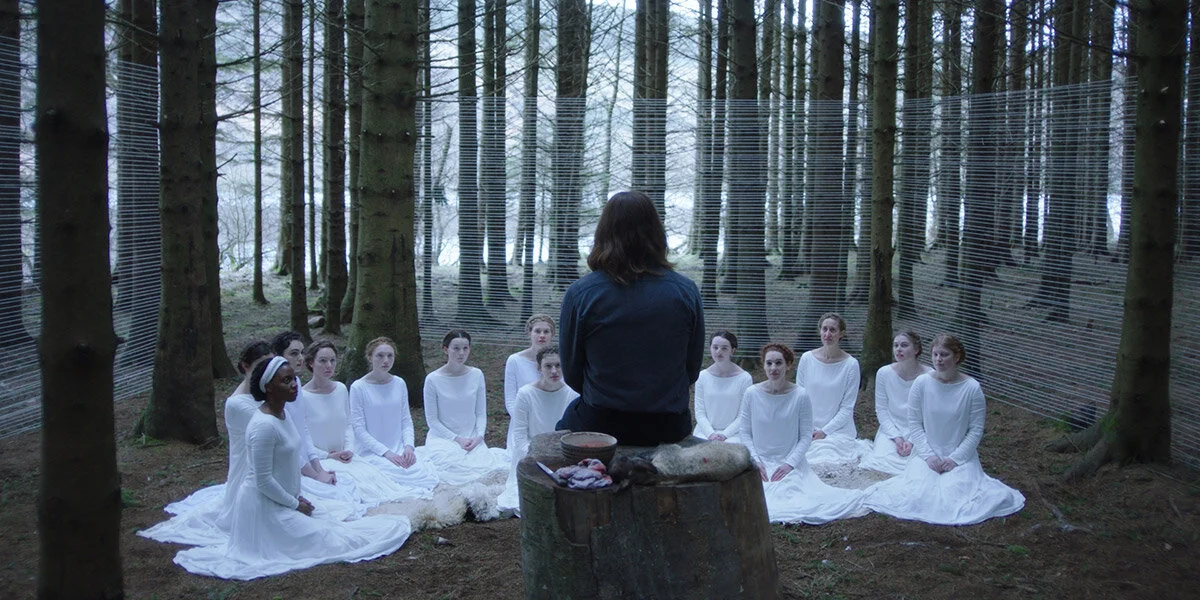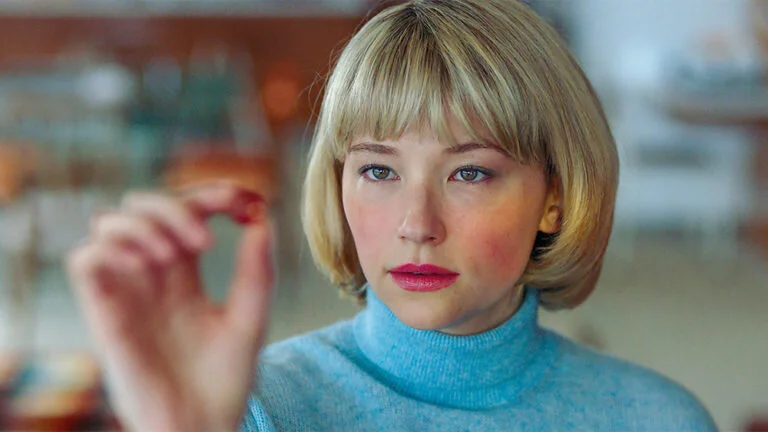Film Review: THE OTHER LAMB
© Subotica Entertainment
By Belle McIntyre
I don’t know if it just my imagination or we are seeing more films concerning cults, whether religious or political, which nearly always include the subjugation of women by their male leaders. The Handmaiden’s Tale, which has experienced a resurgence of interest lately, is the film that is immediately brought to mind in this much more modest, though no less sinister focus on a rural “flock” of female devotees, who do, indeed, raise sheep and endow all of their allegiance to a charismatic, handsome, long-haired leader referred to as “Shepherd” (Michiel Huisman). These young beautiful women wearing simple long gowns, with long braids wrapped around their heads live in cabins in a remote and pristine woodland setting. We are given no hint of time period or location and no one, apart from them, ever appears on screen to give any context.
© Subotica Entertainment
We observe them all dressed in white sitting in a circle on the ground listening with rapturous expressions to the lessons of Shepherd. There is something pure and beautiful in this imagery. Yet, upon closer inspection, one begins to make out the presence of strings encircling the group wrapped around the trees on the perimeter. They are fine and delicate like a spider web which looks fragile but can be deadly. Seems like a metaphor to me. We also see scenes of their idyllic life tending their few animals. This contrasts sharply with the meal scenes where the structure of the community becomes clear. The “Sisters” wear blue long dresses and the “Wives” wear red and sit on opposite sides of the table, headed by Shepherd, who chooses one of them to “receive his grace” after the meal. It is both creepy and heartbreaking to see how much they all long to be chosen.
© Subotica Entertainment
The wide-eyed beauty, Selah (Raffey Cassidy) is the youngest member, and totally innocent, never questioning the authority and orthodoxy. She was born in the cult and her mother died shortly after. She was raised by the believers. We see everything through her enormous pale blue eyes, where the camera lingers with long close ups of her face as it registers what she is feeling about what she is seeing. There are some disturbing practices and rituals, involving the smearing of animal blood on the girls faces like warpaint, baptisms which have a sinister feel to them, and transgressive physical actions by Shepherd and his “flock”. He has convinced them that they were “broken” and that he is sacrificing himself to save them.
© Subotica Entertainment
The cracks in Selah’s faith begin with terrifying nightmares and hallucinations around the time of the onset of menstruation, a condition which religious men habitually regard as “unclean”. Selah is sent to another cabin for quarantine, which is where she meets Sarah (Denise Gough). Sarah has been living in this solitary condition since she apparently went slightly off the rails and she had no other place to go. She is bitter and malcontented but explains to Selah that she does not know who she is outside of the cult. She vividly describes herself as being hollowed out and helpless to leave. She is really broken. Not saved.
© Subotica Entertainment
The idyll is shattered and the center cannot hold when the authorities force them to leave their encampment. They must gather their things and find a new place to settle. As Shepherd guides them through the woods for days on end with no clear destination, distrust begins to grow and resentments arise. His desperation is showing through his normal confidence and his power over the flock is wavering as he reveals how little he respects them by treating them as expendable. The exodus allegory and the search for Eden is visually obvious and gorgeous. The entire film is richly colored, beautifully lit and extremely painterly. That things will end badly is clear but not actually shown, which is one of the few subtleties which the director has deployed. Many of the more disturbing scenes are not explicitly shown, which does not diminish their power. Szumowska’s earlier work with Lars von Trier is evidenced in this, her first English-language film. I expect we will see more from her.












